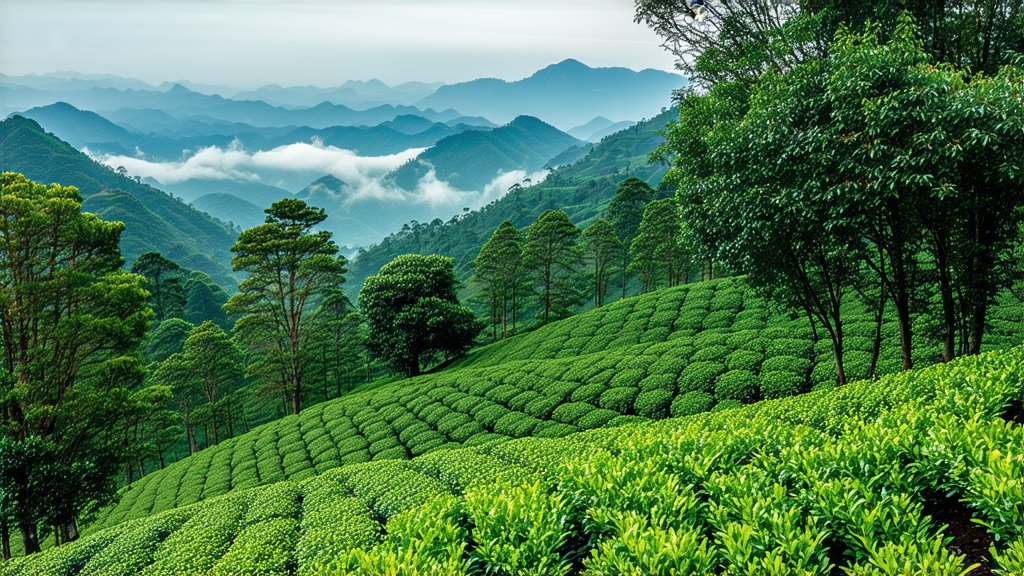
China, a land renowned for its rich cultural heritage and ancient traditions, has long been the birthplace of numerous treasures, among which tea holds a place of unparalleled significance. Among the myriad varieties of tea that grace the palates of connoisseurs worldwide, Chinese black tea stands as a testament to centuries-old cultivation practices and meticulous craftsmanship. This article delves into one such exquisite variety, exploring its historical roots, diverse types, intricate manufacturing process, and the art of appreciation through tasting.
Historical Odyssey
The story of Chinese black tea begins in the mists of time, intertwined with the legends and folklore of ancient China. It is believed that black tea's origins can be traced back to the Tang Dynasty (618-907 AD), though it wasn't until the Ming Dynasty (1368-1644 AD) that its production techniques were refined and widespread. Unlike green tea, which dominated early Chinese tea culture, black tea emerged as a result of fermentation processes discovered accidentally or by design, leading to a distinct category with unique flavors and properties. Over seas and along the Silk Road, Chinese black tea found its way to Europe, where it became a coveted luxury item and played a pivotal role in shaping global tea consumption patterns.
Varieties Galore
Chinese black tea is a vast family encompassing a multitude of sub-varieties, each with its own distinctive characteristics shaped by geography, climate, and traditional methods. Among these, Keemun (Qimen) from Anhui Province, Lapsang Souchong from Fujian Province, and Dian Hong (Yunnan Golden Buds) from Yunnan Province stand out as iconic representations. Keemun, known for its smooth, malty flavor with hints of fruitiness, gained international fame during the 19th century and remains a favorite among tea enthusiasts. Lapsang Souchong, on the other hand, is celebrated for its smoky aroma derived from drying over pine wood fires, offering a bold and unique experience. Dian Hong, literally translating to "Yunnan Golden Buds," showcases the region's high altitude and ideal growing conditions, resulting in a tea with a golden hue and a sweet, floral profile.
Craftsmanship: From Leaf to Cup
The transformation of fresh tea leaves into the rich, aromatic brew we cherish involves several stages of meticulous processing. First comes withering, where freshly picked leaves are spread out to lose moisture and become softer, setting the stage for oxidation. Next is the crucial step of rolling, which breaks down cell walls, releasing enzymes that interact with oxygen during the oxidation process. This controlled fermentation develops the characteristic dark color and complex flavors of black tea. After oxidation, the leaves undergo firing or drying to halt further oxidation and lock in the flavors. Finally, sorting and grading ensure consistency and quality, separating leaves based on size, shape, and quality.
The Art of Tasting
Tasting Chinese black tea is an experience that engages all senses, a ritual steeped in tradition and mindfulness. Begin by selecting a high-quality loose leaf tea and using freshly boiled water cooled to around 95°C (203°F). Place approximately 3 grams of tea per 150ml of water into a preheated teapot or gaiwan. Steep for 3-5 minutes, adjusting according to personal preference for strength. As you pour, observe the tea's vibrant color, often ranging from deep amber to rich copper. Inhale the fragrant steam rising from the cup, noting any subtle notes of floral, fruity, smoky, or earthy undertones. Take your first sip slowly, allowing the tea to coat your palate, savoring its complexity and depth. Pay attention to the body, astringency, sweetness, and aftertaste, which together tell the story of the terroir and the artisan's skill.
In conclusion, Chinese black tea embodies not just a beverage but a cultural legacy that spans millennia. Its diverse varieties, from the smoky allure of Lapsang Souchong to the delicate sweetness of Dian Hong, offer a journey through China's varied landscapes and rich history. The craftsmanship involved in its production is a testament to human ingenuity and respect for nature, while the act of tasting becomes a meditative practice, connecting us to both past traditions and the present moment. As we continue to explore and appreciate this golden legacy, may we find in every cup a reminder of the profound beauty and wisdom inherent in Chinese tea culture.